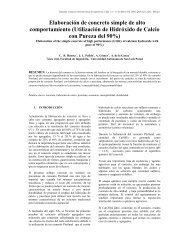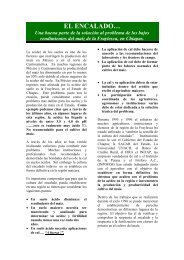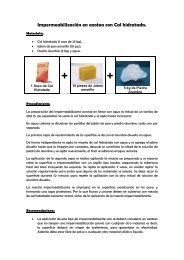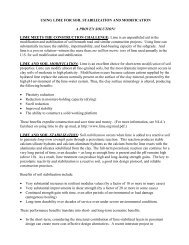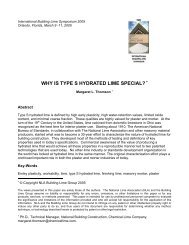Land Contamination: Technical Guidance on Special Sites: Acid Tar ...
Land Contamination: Technical Guidance on Special Sites: Acid Tar ...
Land Contamination: Technical Guidance on Special Sites: Acid Tar ...
You also want an ePaper? Increase the reach of your titles
YUMPU automatically turns print PDFs into web optimized ePapers that Google loves.
Overall Comments<strong>Acid</strong> tars can be of very variable compositi<strong>on</strong> even from <strong>on</strong>e type of process at <strong>on</strong>e site. Thisis a functi<strong>on</strong> of variable process c<strong>on</strong>diti<strong>on</strong>s and, in particular, the quantity and c<strong>on</strong>centrati<strong>on</strong>of acid used. Thus tars in <strong>on</strong>e part of a lago<strong>on</strong> may differ markedly from those in other partsof the lago<strong>on</strong> - especially in terms of pH. The tar compositi<strong>on</strong> and quantities produceddepended <strong>on</strong> a number of variables including the type of coal/oil, carb<strong>on</strong>isati<strong>on</strong> temperature(for benzole) and product required. Some generalisati<strong>on</strong>s can be made as set out in Box 2.1.Box 2.1 Comments <strong>on</strong> differences between tars from different types ofrefining• The thickest tars resulted from the use of small quantities of c<strong>on</strong>centratedacids;• the thinnest tars resulted from the use of large quantities of weak acids.Benzole refining for motor benzole (pre-1960s)The aim was to purify the aromatics (BTX) without sulph<strong>on</strong>ating themsignificantly since the latter would lead to inadvertent removal of the wantedaromatics. Therefore since process c<strong>on</strong>diti<strong>on</strong>s must not be too severe, arelatively weak acid was used and the resulting tars were relatively thin.Purer benzole fracti<strong>on</strong>s (post-1960s)A more severe acid treatment using more c<strong>on</strong>centrated acids was required andthe resulting tars were more viscous.White oil producti<strong>on</strong>Aromatics had to be removed which required ‘oleum’ (the most c<strong>on</strong>centratedform of sulphuric acid) and the resultant tar was thicker, more acrid and morenoxious than that generally arising from benzole refining.Oil re-refiningThe volume and compositi<strong>on</strong> of the acid tar depended <strong>on</strong> the extent and type ofc<strong>on</strong>taminati<strong>on</strong> in the original oil, the c<strong>on</strong>tact time with the acid used and theprocess efficiency. Therefore a wide range of acid tars was produced.<strong>Acid</strong> tars that are produced currently in the UK are either incinerated or treated with alkalisprior to disposal in c<strong>on</strong>trolled landfill sites. In the past, producers frequently dumped them<strong>on</strong>-site (usually in a lago<strong>on</strong> or void) in an unc<strong>on</strong>trolled manner. In some cases, this occurredover periods as l<strong>on</strong>g as 100 years, as various attempts to treat and utilise the tar were ofrelatively limited success.R&D <str<strong>on</strong>g>Technical</str<strong>on</strong>g> Report P5-042/TR/04 9



